 W
WLieutenant Colonel Addison Earl Baker was commander of the 93rd Bombardment Group (Heavy) in the U.S. Army Air Forces who led the group on the low-altitude Allied bombing mission of oil refineries at Ploieşti, Romania, Operation Tidal Wave. For his actions during World War II he received the United States of America's highest military decoration, the Medal of Honor (posthumously).
 W
WRichard Ira Bong was a United States Army Air Forces major and Medal of Honor recipient in World War II. He was one of the most decorated American fighter pilots and the country's top flying ace in the war, credited with shooting down 40 Japanese aircraft, all with the Lockheed P-38 Lightning fighter. He died in California while testing a Lockheed P-80 jet fighter shortly before the war ended.
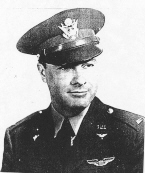 W
WHorace Seaver "Stump" Carswell Jr. was a United States Army major who was killed in action while serving as a member of the Army Air Forces during World War II. He was posthumously awarded the Medal of Honor.
 W
WFrederick Walker Castle was a general officer in the U.S. Army Air Forces during World War II, and a recipient of the Medal of Honor. He was killed in action leading the bombing mission for which he was awarded the Medal of Honor.
 W
WDemas Thurlow "Nick" Craw was a United States Army Air Forces officer and a recipient of the United States military's highest decoration—the Medal of Honor—for his actions in World War II. Craw and Maj. Pierpont M. Hamilton were the first Army Air Forces recipients of the Medal in the European-Mediterranean theater of World War II and the only AAF members to be awarded that decoration for valor not involving air combat.
 W
WJames Harold Doolittle was an American military general and aviation pioneer who received the Medal of Honor for his daring raids on Japan during World War II. He also made early coast-to-coast flights, won many flying races, and helped develop instrument flying.
 W
WHenry Eugene Erwin Sr. was a United States Army Air Forces airman and a recipient of the U.S. military's highest decoration—the Medal of Honor—for his actions in World War II. He earned the award as a staff sergeant and radio operator aboard a B-29 Superfortress in the Asia-Pacific theater. During a 1945 bombing mission over Koriyama, Japan, a white phosphorus bomb prematurely ignited in his aircraft and seriously wounded him. As smoke filled the plane, he picked up the burning device and carried it through the aircraft to the cockpit where he tossed it out a window. Although he suffered severe burns, he successfully saved his plane and all crew members aboard by disposing of the incendiary/smoke-generating bomb.
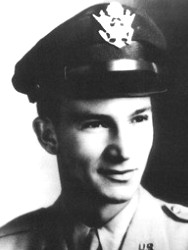 W
WRobert Edward Femoyer is one of only ten known Eagle Scouts to receive the Medal of Honor; the others are Aquilla J. Dyess, Eugene B. Fluckey, Thomas R. Norris, Arlo L. Olson, Mitchell Paige, Ben L. Salomon, Britt Slabinski, Leo K. Thorsness, and Jay Zeamer, Jr.. He served in the U.S. Army Air Forces and is the only navigator awarded the Medal of Honor.
 W
WDonald Joseph Gott was a United States Army Air Forces officer and a recipient of the United States military's highest decoration—the Medal of Honor—for his actions in World War II.
 W
WPierpont Morgan Hamilton was a general officer in the United States Air Force, and the scion of two illustrious families in American history, the Hamilton family, which traces its lineage to founding father Alexander Hamilton, and the Morgan family, which traces its lineage to the financier and banker J. P. Morgan.
 W
WJames Howell Howard (April 8, 1913 – March 18, 1995) was a general in the United States Air Force and the only fighter pilot in the European Theater of Operations in World War II to receive the Medal of Honor — the United States military's highest decoration. Howard had the rare distinction of being an ace in two operational theaters during World War II, with over 6 kills with the Flying Tigers of the American Volunteer Group (AVG) in the Pacific and 6 kills over Europe with the United States Air Force. CBS commentator Andy Rooney, then a wartime reporter for Stars and Stripes, called Howard's exploits "the greatest fighter pilot story of World War II". In later life, Howard was a successful businessman, author, and airport director.
 W
WLloyd Herbert "Pete" Hughes Jr.,, was a pilot who held the rank of Second Lieutenant in the United States Army Air Forces who received the Medal of Honor for his actions in Operation Tidal Wave during World War II.
 W
WJohn Louis "Jack" Jerstad was a United States Army Air Forces officer who was posthumously awarded the United States military's highest decoration, the Medal of Honor. He received the medal for his actions as a B-24 pilot during a raid on Ploieşti, Romania, in World War II.
 W
WGeneral Leon William Johnson was a United States Air Force general who was awarded the Medal of Honor for leading the attack on the Ploesti oil fields during World War II.
 W
WJohn Riley Kane was a colonel in the United States Army Air Forces and later the United States Air Force who received the U.S. military's highest decoration, the Medal of Honor, in World War II. A native of Texas, Kane joined the Army Air Forces after graduating from Baylor University. During World War II, he commanded the 98th Bombardment Group, a B-24 Liberator unit, and conducted bombing missions in Europe, Africa and the Middle East. He was awarded the Medal of Honor for leading the 98th in Operation Tidal Wave, a low-altitude attack on oil refineries in Ploieşti, Romania. After the war, he commanded a series of airfields in the U.S. and served a year and a half in North Africa before his retirement.
 W
WNeel Ernest Kearby was a United States Army Air Forces colonel and P-47 Thunderbolt pilot in World War II who received the Medal of Honor for his actions in combat. Kearby is the first United States Army Air Forces fighter pilot to receive Medal of Honor. He scored total 22 aerial victories and was the top-scoring P-47 pilot in the Pacific Theater.
 W
WDavid Richard Kingsley was a United States Army Air Forces officer and a recipient of the United States military's highest decoration—the Medal of Honor—for his actions in World War II.
 W
WRaymond Lee Knight was a United States Army Air Forces officer and a recipient of the United States military's highest decoration—the Medal of Honor—for his actions in World War II.
 W
WWilliam Robert "Bill" Lawley Jr. was a United States Army Air Forces officer and a recipient of the United States military's highest decoration—the Medal of Honor—for his actions in World War II.
 W
WDarrell Robins Lindsey was a bomber pilot in the U.S. Army Air Forces during World War II and a posthumous recipient of the Medal of Honor.
 W
WJack Warren Mathis was a United States Army Air Forces officer and a recipient of the Medal of Honor, the United States military's highest decoration, for his actions in World War II.
 W
WThomas Buchanan McGuire Jr. was an American United States Army major who was killed in action while serving as a member of the United States Army Air Forces during World War II and posthumously awarded the Medal of Honor. He was one of the most decorated American fighter pilots and the second highest scoring American ace of the war.
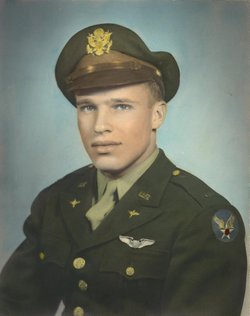 W
WWilliam Edward Metzger Jr. was a United States Army Air Forces officer and a recipient of the United States military's highest decoration—the Medal of Honor—for his actions in World War II.
 W
WEdward Stanley Michael was a United States Army Air Forces officer and a recipient of the United States military's highest decoration—the Medal of Honor—for his actions in World War II.
 W
WJohn Cary "Red" Morgan was a United States Army Air Forces pilot in World War II who received the Medal of Honor for his actions during a 1943 bombing run over Germany, which also inspired the character of 2nd Lieutenant Jesse Bishop in the novel and film Twelve O'Clock High.
 W
WHarl Pease Jr. was a United States Army Air Corps officer and a recipient of the United States military's highest award, the Medal of Honor, for his actions during World War II. He was the namesake for Pease Air Force Base, now Pease Air National Guard Base.
 W
WDonald Dale Pucket was a United States Army Air Forces officer and a recipient of the United States military's highest decoration—the Medal of Honor—for his actions in World War II.
 W
WJoseph Raymond Sarnoski was an officer of the United States Army Air Forces during World War II, and received the Medal of Honor posthumously.
 W
WWilliam Arthur "Bill" Shomo was a United States Army Air Forces fighter pilot during World War II. He is credited with eight victories during the conflict. Seven of these occurred during a single mission while flying a reconnaissance version of the P-51 Mustang, for which he received the Medal of Honor.
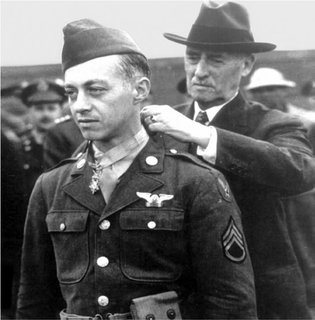 W
WMaynard Harrison "Snuffy" Smith was a United States Army Air Forces Staff Sergeant and aerial gunner aboard a B-17 Flying Fortress bomber in World War II, received the Medal of Honor for his conduct during a bombing mission over France on May 1, 1943.
 W
WWalter Edward Truemper was a United States Army Air Forces officer in World War II and a recipient of the U.S. military's highest decoration, the Medal of Honor. He and his crewmate, Staff Sergeant Archibald Mathies, were posthumously awarded the medal for attempting to save the life of their wounded pilot by staying aboard and trying to land their damaged aircraft. Truemper, Mathies, and the pilot were killed when the aircraft crashed following a third unsuccessful landing attempt.
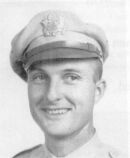 W
WLeon Robert "Bob" Vance Jr. was a Medal of Honor recipient who served in the United States Army Air Forces during World War II.
 W
WForrest Lee Vosler, was a Boeing B-17 Flying Fortress radio operator who was the second enlisted U.S. airman to receive the Medal of Honor. He also received the Air Medal and Purple Heart.
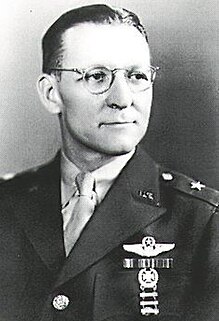 W
WBrigadier General Kenneth Newton Walker was a United States Army aviator and a United States Army Air Forces general who exerted a significant influence on the development of airpower doctrine. He posthumously received the Medal of Honor in World War II.
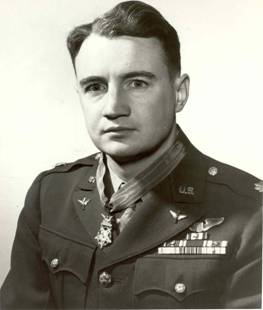 W
WJay Zeamer Jr. was a pilot of the United States Army Air Forces in the South Pacific during World War II, and received the Medal of Honor for valor during an air mission on June 16, 1943. After the war, he became an aeronautical engineer and worked in the aerospace industry.